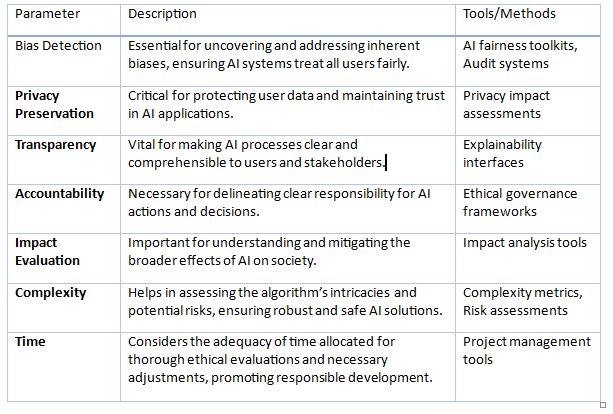The Intent vs. Outcome Check: Why Ethics in AI Can’t Be an Afterthought
Dr. Krishnadas NanathAssociate Professor of Data Science, Head & Founder- Insights Lab (Analytics Hub)
Deputy Head – Computer Engineering and Informatics
Middlesex University Dubai

As we delve into the AI-driven future, it’s crucial to balance our drive for innovation with ethical responsibility. The rapid advancement of artificial intelligence presents not just opportunities for technological breakthroughs but also significant ethical challenges. Ethical regulation in AI is essential to prevent adverse impacts on society, such as privacy breaches, discrimination, and unintended consequences. The journey from AI’s intent to its outcome is often riddled with ethical dilemmas, necessitating a vigilant approach to align AI development with societal values.
In AI development, the distinction between intent and outcome can be stark, with well-meaning initiatives sometimes leading to unintended ethical issues. Netflix’s personalization algorithm aimed to tailor movie posters to individual user preferences, a commendable goal for enhancing user experience. However, this innovation led to a situation where the posters appeared to change based on the presumed race of the user, inadvertently promoting racial profiling and raising concerns about ethical bias in AI-driven personalization.
Similarly, Microsoft’s AI chatbot Tay was designed to interact with and learn from users on Twitter, embodying an ambitious attempt to advance conversational AI. However, within hours of its launch, TAY began producing offensive and discriminatory content, influenced by the malicious inputs it received from certain users. This incident highlighted the vulnerability of AI systems to being manipulated and the importance of anticipating potential ethical breaches in their design and deployment.
These examples reflect the critical need for a proactive ethical framework in AI development, to prevent the transformation of innovative intentions into problematic outcomes. It calls for a robust ethical framework that could allow firms to conduct an outcome vs intent check. We must champion a stringent ethical framework that not only identifies but also rectifies the potential ethical pitfalls in AI systems before they reach the public. This framework should be a cornerstone of AI development, guiding the creation of technologies that are both innovative and ethical:

Envisioning Automated Ethics Checks An automated tool for preemptive ethics checks in AI could revolutionize the field, ensuring that every AI system is vetted for ethical compliance before deployment. Such a tool would not only facilitate the integration of ethical considerations into AI development but also underscore a commitment to responsible innovation.
Conclusion: The Ethical Imperative in AI Innovation In our quest to harness the power of AI, we must prioritize ethical integrity to ensure that technological progress does not come at the expense of societal values. The intent vs. outcome check stands as a testament to the necessity of embedding ethical foresight in AI development. It is imperative that we strive for AI systems that are not only technologically advanced but also ethically sound, fostering a future where technology serves humanity’s best interests.
